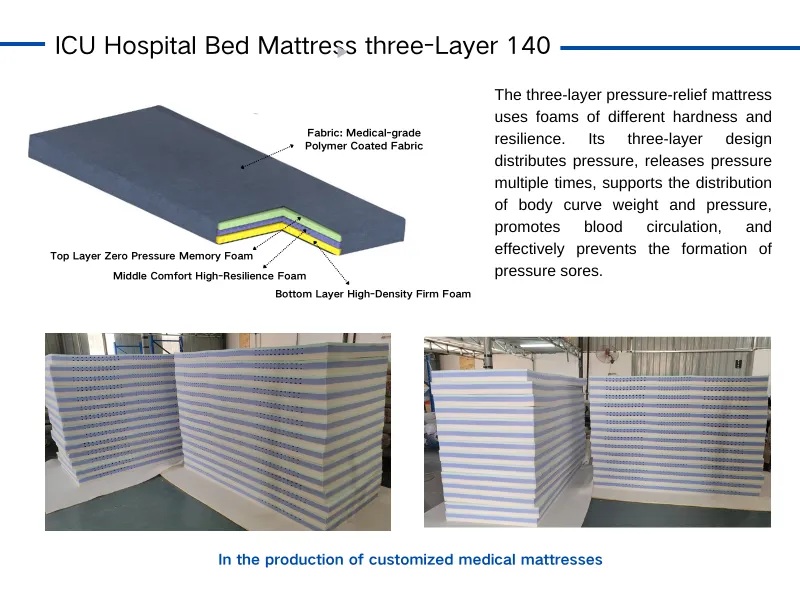high quality pressure injury
Understanding High-Quality Pressure Injury Management
Pressure injuries, also known as pressure ulcers or bedsores, are localized damage to the skin and underlying tissue, primarily caused by prolonged pressure on the skin. They commonly occur in individuals with limited mobility, such as those who are bedridden or use wheelchairs. Managing and preventing these injuries is crucial in clinical settings and home care, as they can lead to severe complications, including infections and systemic issues. This article will explore the principles of high-quality pressure injury management, emphasizing prevention, assessment, and treatment.
Prevention
The primary goal in managing pressure injuries is prevention. This starts with identifying individuals at risk. High-risk populations include older adults, people with spinal cord injuries, and those with conditions affecting blood flow. Conducting a thorough risk assessment, often using tools like the Braden Scale, allows healthcare providers to identify patients who need proactive care.
Once at-risk individuals are identified, implementing preventive strategies can significantly reduce the incidence of pressure injuries. These include
1. Regular Repositioning Patients should be repositioned at least every two hours to relieve pressure on vulnerable areas, particularly the sacrum, heels, and elbows. For patients in wheelchairs, repositioning should occur every 15 minutes.
2. Support Surfaces Utilizing specialized mattresses and cushions can help distribute weight more evenly, thereby reducing the risk of pressure buildup. Low-air-loss mattresses, for instance, are designed to maintain skin integrity in high-risk patients.
3. Nutrition and Hydration Proper nutrition plays a critical role in skin health. A balanced diet rich in proteins, vitamins, and minerals is essential for tissue repair and maintenance. Hydration is equally important, as dehydrated skin is more prone to injury.
Assessment
If a pressure injury does occur, swift and thorough assessment is essential for effective management. A high-quality assessment should include
high quality pressure injury

- Wound Classification Pressure injuries are classified into stages based on the depth of damage. Stage I involves non-blanchable redness of intact skin, while Stage IV signifies full-thickness tissue loss with exposed bone or muscle. Understanding the stage aids in planning appropriate treatment.
- Wound Characteristics Assessing the wound’s size, depth, drainage, and surrounding skin condition helps tailor interventions. Wound measurements should be documented regularly to monitor healing progress.
- Patient Factors Individual patient factors, including age, comorbidities, and overall health, can influence healing. A holistic approach that considers these factors will lead to a more customized care plan.
Treatment
Effective treatment of pressure injuries relies on a combination of wound care and addressing underlying factors. Key components include
1. Debridement Removal of necrotic (dead) tissue is often necessary to promote healing. This can be done surgically, mechanically, or through autolytic methods, where the body’s enzymes break down dead tissue.
2. Dressing Selection Choosing the right dressing is critical for creating an optimal healing environment. Dressings should maintain moisture while keeping the wound clean and protected. Hydrocolloid dressings, foam dressings, and alginate dressings are commonly used options.
3. Infection Control Signs of infection, such as increased redness, swelling, or drainage, must be addressed promptly. This may involve cleaning the wound, changing dressings more frequently, and using topical or systemic antibiotics as necessary.
Conclusion
High-quality pressure injury management encompasses a comprehensive approach that integrates prevention, assessment, and treatment. By focusing on these key areas, healthcare providers can significantly reduce the incidence and severity of pressure injuries, promoting better patient outcomes and enhancing quality of life. Education and ongoing training for all caregivers, whether in clinical or home settings, is essential to ensure effective pressure injury management practices are implemented consistently.
-
The Truth About "Orthopedic" Mattresses for Sore Back PainNewsAug.23,2025
-
Space-saving Benefits of a Single Mattress CubeNewsAug.23,2025
-
Eco-friendly Advantages of a Silicon MattressNewsAug.23,2025
-
How to Fix Sagging in a Special MattressNewsAug.23,2025
-
How Ambulance Stretcher Mattresses Reduce Pressure InjuriesNewsAug.23,2025
-
Best Cleaning Practices for a Hospital Mattress DoubleNewsAug.22,2025
-
Mattresses Designed for Back Pain ReliefNewsAug.08,2025

